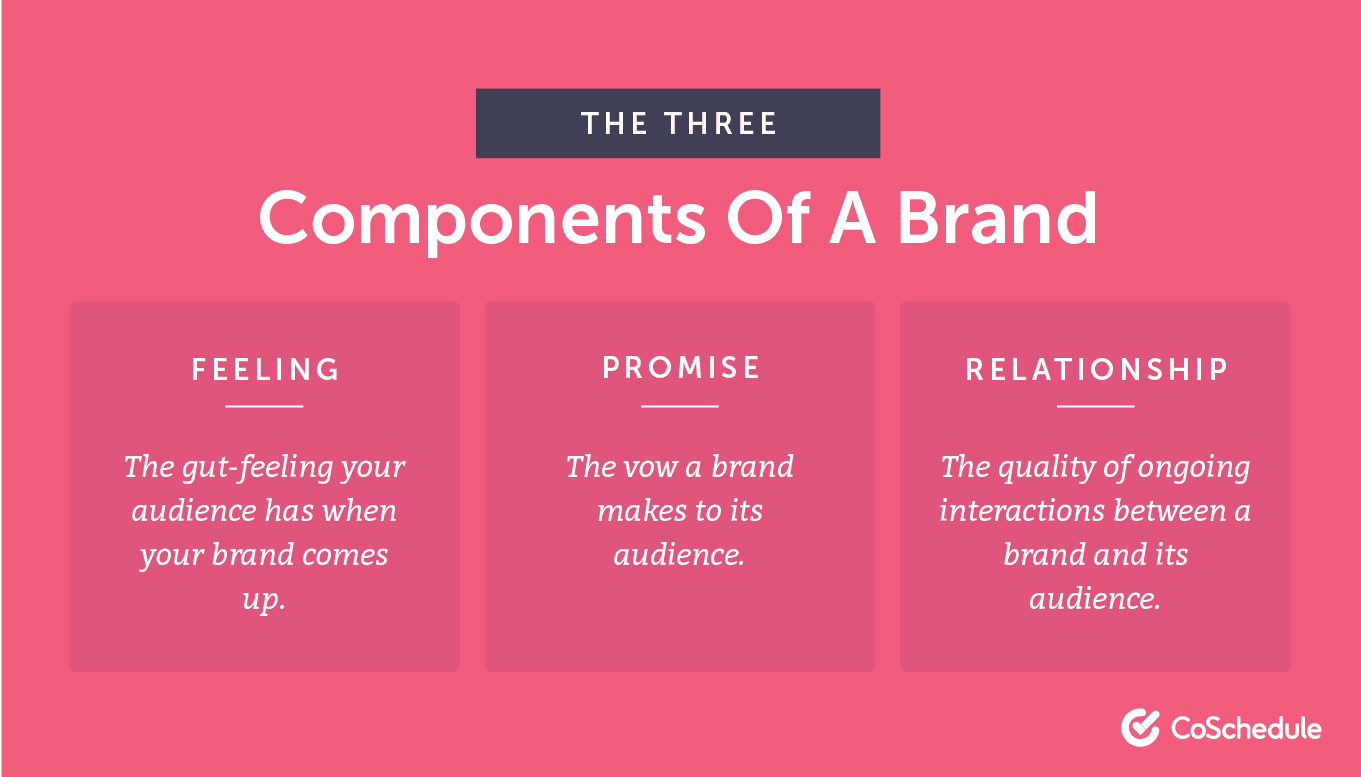Use Brand Positioning To Stand Out From Competitors
How do you get consumers to truly remember your brand? And choose it over all your competitors? You use brand positioning to stand out. And by this, we mean positioning your brand in a way that makes it unique and stand apart from competitors.

To start off, let’s go back to the basics. What makes up a brand? Well there are three main components:
- The feeling or gut reaction it evokes in customers.
- A brand promise that you make to your customers.
- The quality of relationships and engagement that you have with your customers.
Bringing all of these elements together in a unique and impactful way, is how to build a potent brand strategy. And how you can stand out from competitors.
According to the authors of the bestselling page turner ‘Positioning: The Battle for Your Mind’, Al Ries and Jack Trout, brand positioning is, “an organized system for finding a window in the mind. It is based on the concept that communication can only take place at the right time and under the right circumstances.”
As a business, you’re ultimately positioning your brand one way or the other, whether you’re doing so intentionally or not. And this can mean accidentally associating your brand with ideas and values that you don’t align with at all. This is why it’s so important that you tackle this process thoughtfully. In this blog, we show you how you can use brand positioning to stand out along with some examples of brands that have done this in really impactful ways.
How you can use brand positioning to stand out
Before we get into the steps involved in effective brand positioning let’s take a look at the goals you can achieve through it. Knowing these end goals can help you shape a stronger strategy:
You can make your brand truly unique
Regardless of the industry that you are a part of, chances are you’ve got stiff competition from at least a couple of other businesses. When done right, brand positioning helps you make your brand unique from all the others, while staying relevant to your target audience. And the more you play into this and let your customers know why you are unique and the best at what you do, the more they will want to buy from you. The question ‘why choose us?’ needs to have a crystal clear reply. Get this right and you will see results.
You can appeal to the right customers
In addition to making your brand unique, brand positioning can help communicate to your customers that you are the best fit for their specific needs. This will then encourage them to continue to buy from you.
If your brand is part of a particular niche you can craft your copy and designs to connect with your audience in very targeted ways. Depending on the niche, you can even use industry-specific terminology to let your customers know that you are well-versed in what you do. Don’t worry about not appealing to everybody. The chances of getting high-quality leads are better when you are focused on the right people.
You can build up customer loyalty
Being a successful business is not only about getting new customers or broadening the audience you reach. Retaining customers and building lasting, meaningful relationships with them will help you grow your business too. When you use brand positioning to stand out, you help cultivate trust and loyalty among your customers.
If you lack the ability to build customer loyalty, you run the risk of losing people. And of course, if you’re losing them because you’re not able to deliver on your brand promise you run the risk of getting bad reviews and a negative reputation as well. Use your brand positioning to build a solid system for your customers to stay with you for years.
How to build a strong brand positioning strategy
Brand positioning takes careful planning and precise implementation. Each brand will have a different approach to their brand positioning strategy. However, there are some general steps that are important to include in your strategy, in addition to the unique steps that you will have to add in. Ready to use brand positioning to stand out from competitors? Here’s how you can get started:
Figure out your customer personas
Do you know who your ideal buyers are? What are the problems they have that you can help solve in a unique way? Why do you think your brand matters to them? The right brand positioning strategy involves communicating how you can solve your ideal customers problems.
So before you start working on the actual strategy, define your customer personas or your ideal customer profiles (ICPs). This will give you a clear idea of who you’re targeting based on who is most likely to need and use your product or service.
You can create these profiles using the actual data you have about your customers. Or if you do not have this kind of data yet, you can look to the demographic data of those engaging with your ads, or you can simply build profiles based on your educated guesses. As you gather data you’ll be able to refine the profiles.
Evaluate your current brand positioning
How are you currently positioning your brand? Is it in a very similar way to others in your industry? Are you highlighting uniquely value adds in your customer experience? Knowing where you stand right now is the best way to figure out how to get to where you need to go next. Otherwise you might over or underestimate the steps you have to take to shift your brand positioning to how you want it to be.
Do you have a mission or vision statement? How about a list of values? These may be internal or shared externally, but either way it’s important to take stock of how well they represent your brand. Next you’ll want to take a look at your unique value proposition(s) along with your brand’s strengths and weaknesses.
And lastly you’ll want to think about how effective your brand personality and voice are. Are they getting your messaging across effectively? Are they relatable for your customers? How about niche marketing terms – are you using too many? As you ask these questions, consider ways in which you can make tweaks to present your brand in ways that are easy to understand, relatable and reassuring.
Identify and analyze your competition
Competitor analysis is the next step of your strategy. To use brand positioning to stand out, you’ve got to have a clear sense of what you’re trying to stand apart from. There are a few ways in which you can get started on this research:
- Research and identify the competitors in your market. You can do this by googling keywords related to your product or service. And if you’ve got a sales team, you can tap into their insights in this area as well.
- You can also ask for customer feedback. This could be part of an onboarding questionnaire like we do here at Kimp. Or through outreach to take part in feedback surveys or calls. You’ll want to ask your customers about the brand or brands they were considering before choosing yours. And why they ultimately chose yours.
- Social media research can help too. For example, Quora allows consumers to find out more about the products and services they’re considering from an objective audience. Peruse through a few threads to see which brands are the most talked about in your niche.
Next, after you’ve identified your competitors, you can start your analysis. Look at how each one is positioning their brand.
There are a few key factors that your research must include, such as:
- Products and/or services that your competitors offer
- Strengths and/or drawbacks
- The marketing strategies that they are implementing – be sure to make note of which strategies are working well and to look for lessons in those that are not
- The position of the competitors in the current market (i.e. Who’s the market leader, and where do the rest fall? And where does your brand land?)
Identify what sets you apart
What is it that really helps you stand apart from the rest? What features and advantages do your products and services offer that others do not? Do customers think of what you offer as a must have? If so, what is the reason behind it? It’s important to really distinguish what your “X factor” is so that you can use brand positioning to stand out from competitors.
This process is a whole lot of analyzing and comparing, but if you put in the work, your brand positioning will really benefit. Use a product market fit survey to see what makes you unique to your customers. To conduct a product market fit survey ask your customers the following:
- Why do they think that you stand out and why did they choose your brand?
- Who do they think your marketing resonates with best? And who do they think your product or service resonates with best? If the answers are different to these two questions you’ve got some tweaking to do!
- What would they do if your product or service was no longer available?
- What benefits do they gain from your brand? And who they believe benefits the most from you.
You might think that your best insights here will come from the customers who consider your products a must-have. But it’s also valuable to hear from segments that you’re not resonating with so much. It will help you identify gaps in your messaging, and how you can better tailor different ad sets to different audience segments.
Articulate your value propositions clearly
After you’ve done a bit of research to confirm what your audience believes makes you unique, translate these into value proposition statements. To get started, you can categorize the key values that you identified into themes related to specific segments of your audience..
For example, maybe you have a real estate brand and some of your customers love the flexibility of your online appointment booking, and appreciate the digital resources that you share. Focus on the why – if these clients love these features because they save them time and money, you’ll want to make sure you highlight those aspects of your service when targeting a similar audience.
During this step make sure that you take note of the aspects of your brand that are universally liked, and those that are specific to different segments. This will help you use brand positioning to stand out in ways that resonate with your customers.
Work on being credible
Brand credibility is a crucial element that will help you attract and retain customers. So ask yourself, based on how you’re currently positioning your brand, the following:
- Why would people see your brand as being credible?
- How can you demonstrate that you can deliver a better service than your competitors?
You’ll find some insight into this in the data and notes you’ve collected from existing customers. It’s also worthwhile to answer these questions internally. And to pose them to those you trust as soundboards or advisors as well. When you look at the responses you’ve collected from customers, try to filter the answers out based on words and phrases linked to trust and credibility. Look for words like ‘only’, ‘best’, ‘highest quality’, ‘excellent’ as they are generally good indicators of trust.
Create a brand positioning statement
A brand positioning statement has one or two sentences usually, and it takes the form of a declaration. It helps you communicate the unique values of your brand. Some of the best positioning statements have four key components:
- Summarizing significant traits of their target audience.
- Defining their market/brand category and why they are relevant to their audience.
- Delivering a brand promise. This means sharing the most compelling benefits people can gain specifically from your brand.
- Giving people a reason to believe in your brand by explaining how you intend to deliver on your brand promise.
If you know how to address each of these points you have what you need to get started on your positioning statement. The standard brand positioning statement tends to follow this format:
“For [target customers], [company name] is the [market definition] that delivers [brand promise] because only [company name] is [reason to believe].”
How to use brand positioning to stand out successfully
Ready to get on the road to building that perfect brand positioning strategy? We’ve put together some inspiring examples from brands that really aced their positioning.
Using clear brand positioning statements
Amazon.com shared their first brand positioning statement in 2001. During this time, they were almost exclusively selling books.
“For World Wide Web users who enjoy books, Amazon.com is a retail bookseller that provides instant access to over 1.1 million books. Unlike traditional book retailers, Amazon.com provides a combination of extraordinary convenience, low prices, and comprehensive selection.”
Zipcar.com shared a great example of a brand positioning statement in 2000, when they were founded:
“To urban-dwelling, educated techno-savvy consumers, when you use Zipcar car-sharing service instead of owning a car, you save money while reducing your carbon footprint.”
Both these statements are concise, clear and communicates what makes each brand so unique. They address specific customers directly and help people see why they can trust the brand.
Building your ads around your positioning
Tesla
Tesla is a luxury brand, and their price ranges are way more than those of their competitors. Because of that reason, they do not mention anything related to pricing in their brand positioning or advertising.
Instead, they draw focus to the quality of the vehicles they produce. For example, they highlight and emphasize producing luxurious, electric, and eco-friendly cars. The higher quality of their vehicles and their long-range feature helps them differentiate themselves, while the electric functionality helps them stand apart from other gas powered cars.
In fact, this brand went on to not just build a really strong and fun image, they also created a successful niche for themselves.
Apple
We can’t talk about brand positioning without mentioning the Apple brand. They come out with innovative technology, and pricing that reflects this. Their customer care is end to end and unrivaled. They provide experiences and empower a lifestyle. They’re not just in the business of selling products.
Apple encourages their customers to ‘Think Different’ in all aspects of their marketing. So when customers buy from Apple, they are buying into their positioning and values of innovation, imagination and creativity. And the strength of its brand positioning is the biggest reason for its unmatched customer loyalty.
Brand positioning will elevate your marketing
To use brand positioning to stand out from your competitors is to use one of the most effective tools at your disposal. And once you’ve got a clear sense of how to position your brand, you’ll have the foundation for some powerful marketing. While we’ve outlined steps you can follow to get started, it’s important to note that this is by no means just a one-time or linear process. To really stand the test of time, your brand has to keep on identifying and building on its strengths as they evolve over time.







